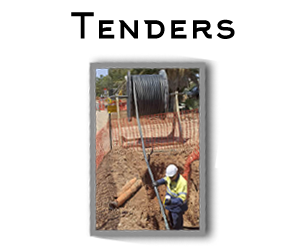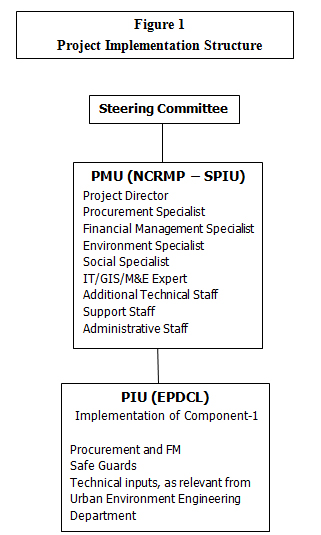
On October 12, 2014, a very severe cyclonic storm âHudhudâ made landfall on the coast of Andhra Pradesh, near the city of Visakhapatnam. At the time of landfall, the estimated maximum sustained surface wind speed associated with the cyclone was about 180-220 kmph and height of the waves up to 3 meters. The tide gauge at Visakhapatnam reported maximum storm surge of 1.4 meters above the astronomical tide. By October 14, âHudhudâ drifted northwards toward Uttar Pradesh and weakened into a well-marked low-pressure area over east Uttar Pradesh and neighborhood.
The Government of Andhra Pradesh (GoAP) was proactive in preparing for cyclone âHudhudâ. In addition to the updates from India Meteorological Department (IMD), the intensity and magnitude of the cyclone were continuously tracked at Andhra Pradesh State Disaster Management Authority (APSDMA) and a range of preparatory measures were launched to face the cyclone. Relief and rescue team were deployed in the coastal districts most likely to be impacted and regular warnings to vulnerable populations were issued through various channels. This, supplemented by the evacuation of close to 250,000 persons, mostly living in vulnerable kutcha houses or low-lying areas, helped limit the death toll from the cyclone to 61.
Cyclone âHudhudâ and the floods that followed the associated heavy rainfall caused extensive devastation in all the affected districts, uprooting vast number of trees, damaging roads, public buildings, livelihoods and disrupting telecommunications and power infrastructure.
The Andhra Pradesh Disaster Recovery Project (APDRP) constitutes a large multi-sector engagement on risk and vulnerability reduction, with assistance for restoring and improving rural connectivity, public services and livelihood opportunities in targeted communities of Andhra Pradesh, and increase the capacity of the State Entities to respond promptly and effectively to an eligible crisis or emergency. This project is part of a broader package to support the GoAPs reconstruction and recovery efforts and to strengthen its capacity to manage future events.
The Project Development Objectives (PDO) are to restore, improve, and enhance resilience of public services, environmental facilities, and livelihoods in Targeted Communities, and to enhance the capacity of state entities to respond promptly and effectively to an eligible crisis or emergency.
The project, through its different components, will provide both direct and indirect benefits to the State of Andhra Pradesh and its 49.4 million inhabitants. Direct beneficiaries include populations of the coastal areas affected, specifically the four heavily impacted districts of Srikakulam, Vizianagaram, Visakhapatnam and East Godavari with a total approximate population of 13.3 million residents.
The achievement of the PDO will be monitored by the following indicators:
The project has seven components:
The objective of this component is to reduce the vulnerability of the cityâs electrical network by laying the power distribution system underground. Andhra Pradesh Eastern Power Distribution Company Ltd. (APEPDCL) will be the implementing agency for the component. 33kV, 11 kV and 415 volts network lines will be converted to underground cable network staring from consumers meter board and going to 11 and 33 kV feeders, from the beach road and going towards landside. The component will also include provision for high-speed data/voice transmission cables in the city of Visakhapatnam.
This component will finance establishing and operating the Project Management Unit (PMU) and the Project Implementation Units (PIUs). In addition, the component will also finance consultancies required for the preparation and supervision of specific activities, monitoring and evaluation, trainings, exposure visits, studies on safety net practices in postâdisaster situations, inclusive and gendered practices in disaster mitigation planning, preparedness and responsiveness, knowledge exchange programs etc.
| Project Components | Total Cost (US$ M) | IDA Financing(US$ M) | Financing |
|---|---|---|---|
| Component1: Resilient electrical network | 120.0 | 81.0 | 68% |
| Component2: Restoration of connectivity and shelter infrastructure | 105.0 | 71.0 | |
| Sub-component2.1:Restoration of rural roads and cyclone shelters | 60.0 | 40.5 | |
| Sub-component2.2:Restoration of major district roads(MDR) | 45.0 | 30.5 | |
| Component3: Restoration and protection of the beach front | 65.0 | 44.0 | |
| Sub-component3.1:Shore protection works | 25.0 | 17.0 | |
| Sub-component3.2:Beach front restoration | 40.0 | 27.0 | |
| Component4: Restoration of environmental services and facilities and livelihood support | 20.0 | 13.3 | |
| Sub-component4.1:Restoration of environmental services / facilities | 8.0 | 5.3 | |
| Sub-component4.2:Livelihoods support | 12.0 | 8.0 | |
| Component5: Capacity building and technical support for disaster risk management | 35.0 | 23.7 | |
| Sub-component 5.1: Capacity augmentation for disaster risk management | 25.0 | 17.0 | |
| Sub-component5.2:Technical support for risk reduction and response preparedness | 10.0 | 6.7 | |
| Component6: Project implementation support | 25.0 | 17.0 | |
| Component7:Contingency emergency response | 0 | 0 | 100% |
| Total | 370.0 | 250.0 | |
| Total Project Cost | 370.0 | ||
| Total Financing Required | 250.0 | ||
The State level Project Steering Committee (SSC) constituted at apex level for NCRMP will oversee and monitor the overall progress of project. The State Project Implementation Unit (SPIU) for NCRMP will act as the Project Management Unit for the project. The PMU will be supported by sector experts drawn from each of the Line Departments (LDs) implementing the project investments. The LDs shall be responsible for actual execution of the works and further maintain the infrastructure created. LDs will appoint nodal officers and will execute the project through respective field offices. The project component-1 and respective implementing agency is illustrated in the Fig.1
